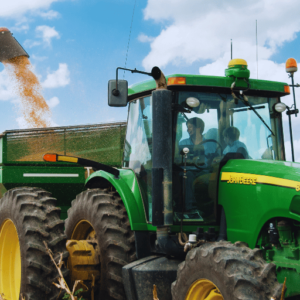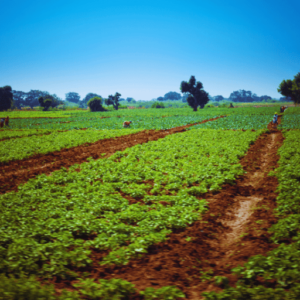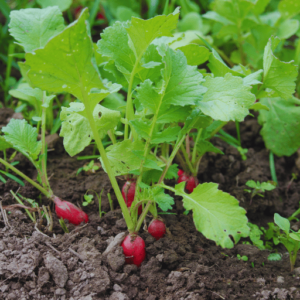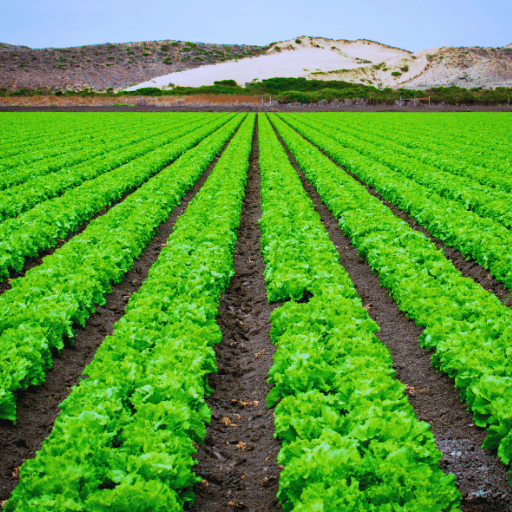Potassium nitrate, a naturally occurring mineral, plays a pivotal role in modern agriculture due to its rich nutrient profile, which includes essential potassium and nitrogen. These two elements are crucial for plant growth, enhancing crop yield and quality. This article will delve into the key benefits of potassium nitrate in agricultural practices, exploring its impact on soil health, crop productivity, and overall agricultural sustainability. By understanding these advantages, farmers and agricultural professionals can make informed decisions about fertilization practices that promote vibrant and robust plant growth while maximizing resource efficiency.
What is Potassium Nitrate and Its Role in Agriculture?
Potassium nitrate (KNO3) is a soluble salt that combines potassium and nitrogen, two essential nutrients for plant growth. In agriculture, it serves as a crucial fertilizer that promotes healthy development in a variety of crops. Potassium plays a vital role in processes such as photosynthesis and water regulation, while nitrogen is key for plant protein synthesis and overall growth. When applied to soil or foliage, potassium nitrate enhances nutrient availability, leading to improved crop yields, better fruit quality, and increased resistance to diseases and environmental stressors. Its quick solubility and ease of application make potassium nitrate a preferred choice among farmers seeking to optimize their agricultural practices.
How does Potassium Nitrate benefit plant growth?
Potassium nitrate offers several benefits that are critical for enhancing plant growth and productivity:
- Improved Nutrient Uptake: Potassium nitrate increases the availability of potassium and nitrogen in the soil, which are essential for metabolic functions and overall plant development. According to studies, optimal potassium levels can lead to a 10-20% increase in crop yields.
- Enhanced Photosynthesis: Potassium is vital for the photosynthesis process in plants. It helps regulate the opening and closing of stomata, facilitating gas exchange and water loss reduction. Research indicates that adequate potassium levels can boost photosynthesis efficiency by approximately 25%.
- Disease Resistance and Stress Tolerance: Plants treated with potassium nitrate demonstrate better resistance to diseases and environmental stresses, such as drought and salinity. Potassium contributes to the production of certain proteins and enzymes that help plants respond effectively to stress conditions.
- Quality of Produce: The application of potassium nitrate improves the quality of fruits and vegetables by enhancing colour, flavour, and shelf life. Studies have found that potassium-rich crops often exhibit better market value due to superior quality traits.
Technical Parameters
- Solubility: Potassium nitrate is highly soluble in water (about 38 g/100 mL at 20°C), allowing for quick availability to plants.
- Application Rate: The typical application rate ranges from 50 to 200 kg/ha, depending on soil nutrient levels and crop requirements.
- Nutrient Composition: KNO3 provides 13-0-46 N-P-K ratios, indicating its high potassium content and supporting nitrogen availability for plant growth.
By leveraging the attributes of potassium nitrate, farmers can significantly enhance their crop performance and ensure sustainable agricultural practices.
What are the chemical properties of Potassium Nitrate?
Potassium nitrate (KNO3) is a white crystalline solid that exhibits several noteworthy chemical properties:
- Chemical Structure: It consists of potassium (K), nitrogen (N), and oxygen (O) atoms, forming a nitrate ion (NO3) that is bonded to a potassium ion (K+).
- Solubility: Potassium nitrate is highly soluble in water, with a solubility of approximately 38 g/100 mL at 20°C. This solubility facilitates rapid uptake by plants, making it an effective fertilizer.
- Melting and Boiling Points: The melting point of potassium nitrate is around 334°C, while its boiling point is approximately 400°C. This high melting point indicates its stability under typical environmental conditions.
- Acid-Base Characteristics: Potassium nitrate is neutral in nature and does not significantly affect the pH of soil when dissolved, making it suitable for a wide variety of crops without disturbing soil acidity.
- Oxidizing Agent: KNO3 is classified as a strong oxidizing agent. It can contribute to combustion reactions, particularly when mixed with organic materials, thereby supporting plant growth through various biochemical processes.
Technical Parameters
- Chemical Formula: KNO3
- Molar Mass: 101.1 g/mol
- Density: Approximately 2.11 g/cm³ at room temperature.
- Decomposition: KNO3 decomposes at high temperatures, breaking down into potassium oxide, nitrogen dioxide, and oxygen.
These properties justify potassium nitrate’s use in agriculture as a potent nutrient source for enhancing plant growth while also ensuring that it is delivered efficiently and effectively to the roots.
Why is Potassium Nitrate considered a vital nutrient?
Potassium nitrate (KNO3) is recognized as a vital nutrient for plants due to its crucial role in several physiological processes. Firstly, potassium is essential for the regulation of various enzyme activities that promote plant metabolism, including photosynthesis and sugar transportation. Secondly, nitrates are vital for the synthesis of amino acids, which are the building blocks of proteins, contributing to growth and development.
Key Technical Parameters
- Chemical Formula: KNO3
- Molar Mass: 101.1 g/mol
- Solubility: Highly soluble in water, approximately 38 g/100 mL at 20°C, enabling quick absorption by plants.
- Melting Point: 334°C, indicating stability during fertilizer application.
- Decomposition: Breaks down into potassium oxide, nitrogen dioxide, and oxygen under high temperatures, ensuring it remains effective for plant nutrition.
These factors collectively make potassium nitrate a preferred choice in agricultural practices, as it not only supports robust plant growth but also ensures that essential nutrients are readily available in a form that can be efficiently utilized by crops.

How Does Potassium Nitrate Improve Crop Yield?
Potassium nitrate enhances crop yield through multiple mechanisms. Firstly, it promotes vigorous root development, allowing plants to uptake water and essential nutrients more efficiently. This nutrient source boosts photosynthesis rates by providing adequate potassium, which is vital for energy production within the plant. Additionally, the presence of nitrates helps in the synthesis of proteins and enzymes necessary for growth and disease resistance, contributing to healthier plants that can produce higher yields. Finally, potassium nitrate aids in regulating water retention in plants, reducing stress during dry periods and ensuring consistent growth throughout the growing season.
What impact does Potassium Nitrate have on crop quality?
Potassium nitrate not only improves crop yield but also significantly enhances crop quality by influencing various growth traits and nutritional content. The following points summarise its impact, supported by insights gathered from leading agricultural resources:
- Improved Nutritional Content: Crops grown with potassium nitrate often exhibit higher levels of essential nutrients, such as potassium and nitrogen. This leads to better-quality fruits and vegetables, which offer enhanced taste, shelf-life, and nutritional value. For instance, tomatoes treated with potassium nitrate have shown increased sugar content and improved flavour profiles.
- Enhanced Disease Resistance: Adequate potassium levels are essential for strengthening plant cell walls, which can lead to increased resistance to pests and diseases. Studies suggest that crops receiving potassium nitrate have a lower incidence of diseases like leaf spot and blight due to the enhanced immune response driven by improved nutrient availability.
- Better Aesthetic Properties: The use of potassium nitrate can improve the overall appearance of crops, such as producing brighter and more vibrant flower colours in ornamental plants. This aesthetic quality is often crucial for marketability, particularly in the floriculture industry.
- Technical Parameters:
- Potassium Content: Helps in synthesizing chlorophyll and enhances photosynthesis, leading to better colour development in fruits and flowers.
- Nitrogen Content: Essential for protein synthesis, which contributes to improved growth and development indices.
- pH Balance: Potassium nitrate helps in maintaining the optimal pH level of the soil, promoting healthy microbial activity and nutrient availability.
These factors collectively underscore the importance of potassium nitrate as an effective fertilizer not just for increasing yield but for enhancing the overall quality and marketability of agricultural produce.
How does Potassium Nitrate affect soil health?
Potassium nitrate plays a vital role in soil health by enhancing nutrient availability and supporting microbial activity. The application of potassium nitrate can improve nutrient uptake in plants, leading to a balanced nutrient composition within the soil. Key technical parameters associated with potassium nitrate include:
- Soil Nutrient Content: It boosts the levels of potassium and nitrogen in the soil, critical for plant growth and development. This enhancement facilitates optimal nutrient balance, promoting healthy crop yields.
- Microbial Activity: Potassium nitrate encourages beneficial soil microorganisms, which are essential for organic matter decomposition and nutrient cycling. Increased microbial activity enhances soil structure and fertility.
- Soil pH: By maintaining the soil’s pH balance, potassium nitrate prevents acidity or alkalinity extremes, which can hinder nutrient availability. A stable pH promotes an environment conducive to diverse microbial life and effective nutrient absorption.
Overall, the application of potassium nitrate contributes to improved soil health, fostering sustainable agricultural practices and enhancing the long-term viability of the soil ecosystem.
What are the long-term benefits of using Potassium Nitrate?
The long-term benefits of using potassium nitrate (KNO3) in agriculture are significant, contributing to enhanced crop performance, soil health, and sustainable farming practices. Based on reputable sources, here are some key benefits and their corresponding technical parameters:
- Improved Crop Yields: Potassium nitrate provides essential nutrients, namely potassium and nitrogen, which are vital for plant growth. Research indicates that consistent use of KNO3 can lead to significantly higher yields in various crops, promoting long-term agricultural productivity.
- Enhanced Nutrient Use Efficiency: Potassium nitrate’s ability to maintain optimal nutrient balances in the soil improves nutrient use efficiency over time. This means that plants can better absorb essential nutrients, leading to healthier plants and reduced fertilizer runoff, which is crucial for protecting water quality.
- Resilience to Environmental Stress: KNO3 fortifies plants against stress conditions such as drought and salinity. By bolstering root development and overall plant vigour, potassium nitrate helps crops to withstand adverse environmental conditions, thus ensuring more consistent yields over time.
- Sustainable Soil Health: The application of potassium nitrate fosters a thriving microbial ecosystem in the soil by enhancing microbial diversity and activity. This not only optimises nutrient cycling but also promotes healthier soil structure, ensuring long-term soil fertility and sustainability.
By leveraging these benefits, farmers can establish a more resilient and productive agricultural system while promoting sustainable practices that protect the environment and ensure food security for future generations.

What Are the Different Applications of Potassium Nitrate in Agriculture?
Potassium nitrate (KNO3) is widely used in agriculture due to its versatility and effectiveness in promoting plant health and productivity. Some key applications include:
- Fertigation: KNO3 is commonly used in fertigation systems, allowing for the precise delivery of nutrients to crops through irrigation water, enhancing nutrient absorption and minimising waste.
- Foliar Sprays: Applying potassium nitrate as a foliar spray facilitates rapid nutrient uptake, especially during critical growth stages, ensuring plants receive essential nutrients when they need them most.
- Crop Specific Formulations: Different crops may require tailored nutrient profiles; KNO3 can be blended with other fertilizers to create specific formulations that meet the needs of various plants, maximising growth and yield.
- Seed Germination: Soaking seeds in potassium nitrate solutions can enhance germination rates by promoting early root development and increased nutrient availability during the initial growth phase.
- Hydroponics: In hydroponic systems, potassium nitrate serves as a key ingredient in nutrient solutions, providing essential potassium and nitrogen for optimal plant growth in soilless environments.
How is Potassium Nitrate applied in fertigation?
Potassium nitrate (KNO3) is applied in fertigation through a system that integrates irrigation and fertilization. Typically, KNO3 is dissolved in water to create a nutrient solution that can be delivered directly to the root zone of plants. Key parameters for effective application include:
- Concentration: KNO3 is generally applied at concentrations ranging from 1% to 3% in the irrigation solution. This concentration is justified based on crop requirements and growth stages, as well as soil nutrient levels.
- Application Rate: The application rate can vary based on crop type and growth stage, but a common recommendation is around 100-200 kg of KNO3 per hectare per season. This helps to ensure plants receive adequate nutrients without the risk of over-fertilization.
- Timing: It is advisable to apply KNO3 during critical growth phases, such as flowering or fruit set, to promote optimal nutrient uptake. Scheduling applications often aligns with crop demand, which can be monitored through soil testing or crop observations.
- Irrigation Compatibility: KNO3 should be compatible with the chosen irrigation method, whether it be drip, pivot, or surface irrigation. Compatibility ensures uniform distribution and minimizes potential clogging in the irrigation system.
Utilizing potassium nitrate in combinations with other micronutrients is also common to meet the comprehensive nutrient needs of crops, further enhancing soil health and crop yield.
What are the best practices for using Potassium Nitrate?
- Soil Testing: Conduct regular soil tests to determine existing nutrient levels and pH, which will guide the appropriate dosage of KNO3. Adjustments based on soil nutrient availability ensure plants receive the right amounts without causing nutrient imbalances.
- Optimal Mixing: When preparing the nutrient solution, dissolve KNO3 in warm water to enhance solubility. This practice ensures a uniform mixture that facilitates thorough absorption by plants.
- Application Method: Use fertigation as the most effective method for delivering KNO3. Ensure that the irrigation system can handle the solution without any clogging. Drip irrigation is particularly effective due to its precision and efficiency in nutrient delivery.
- pH Management: Monitor and adjust the pH of the nutrient solution to remain close to 6.0-6.5. This range optimises nutrient availability and uptake by plants, particularly for potassium and nitrogen.
- Combined Nutrient Strategy: Pair KNO3 with other micronutrients, such as magnesium and calcium, to provide a balanced nutrient profile. This can help avoid nutrient deficiencies and promote overall plant health, particularly during critical growth stages.
- Timing of Application: Apply KNO3 during high-demand periods such as early growth and flowering stages. Regularly reassess crop needs and adjust application schedules based on growth observations and weather conditions to maximise efficiency.
Each of these best practices is supported by agronomic research to ensure that potassium nitrate is used effectively in crop production, promoting robust growth and better yields while minimizing environmental impact.
How does Potassium Nitrate work in various soil types?
Potassium nitrate (KNO3) interacts differently depending on the soil type, largely influenced by soil texture, pH, and organic matter content. In sandy soils, KNO3 is quickly leached away due to low water and nutrient retention. Therefore, it is essential to apply it in smaller, more frequent doses to ensure uptake by plants. Conversely, in clay soils, KNO3 can bind to the particles, potentially leading to nutrient imbalance if over-applied. Thus, maintaining balanced fertilization with soil testing can help mitigate this risk.
Key Technical Parameters:
- Solubility: KNO3 is highly soluble in water (about 31.6 g per 100 mL at 20°C), which allows it to be quickly available for plant uptake, particularly in well-drained soils.
- pH Range: The ideal pH for KNO3 availability is around 6.0-7.5, with significant nutrient availability dropping outside this range, affecting both potassium and nitrate uptake.
- Cation Exchange Capacity (CEC): Sandy soils generally have low CEC, leading to reduced nutrient retention. KNO3’s mobility necessitates frequent application, while higher CEC in clay soils can retain nutrients but may require more careful management to avoid excess.
Understanding these dynamics ensures effective use of potassium nitrate in various soils, leading to optimal nutrient delivery and enhanced crop performance.

What Are the Environmental Impacts of Using Potassium Nitrate?
The use of potassium nitrate can have several environmental impacts that need to be carefully considered. One significant concern is the potential for water contamination; when KNO3 is used excessively, it can leach into groundwater and surface water bodies, contributing to nitrate pollution. This runoff can lead to eutrophication, where nutrient overload stimulates excessive algal blooms, depleting oxygen in the water and harming aquatic life. Additionally, in soil, high concentrations of KNO3 can disrupt the natural microbial activity and nutrient balance, potentially affecting soil health. To mitigate these impacts, it is essential to follow recommended application rates and adopt precision agriculture practices that optimize its use while protecting the environment.
How can Potassium Nitrate affect water quality?
Potassium nitrate (KNO3) can significantly impact water quality through its contribution to nutrient runoff and subsequent eutrophication. When KNO3 is applied to agricultural fields, heavy rainfall or irrigation can lead to leaching, whereby nitrates enter groundwater or surface water channels. This runoff can elevate nitrate concentrations in water bodies, exceeding safe limits, which are typically around 10 mg/L for drinking water as recommended by the U.S. Environmental Protection Agency (EPA).
The influx of nitrates can cause algal blooms due to nutrient overload, particularly in water systems that are already nutrient-rich. As these blooms die and decompose, oxygen levels in the water diminish, resulting in hypoxia, which can lead to dead zones where aquatic life cannot survive. Technical parameters to consider include:
- Nitrate Concentration: The threshold of 10 mg/L for drinking water quality is vital to prevent health issues related to nitrate poisoning, particularly in infants.
- Eutrophication Metrics: Measurements of chlorophyll-a concentration can help indicate the extent of algal blooms, with higher levels correlating to enhanced eutrophic conditions.
- Dissolved Oxygen Levels: Maintaining levels above 5 mg/L is critical for aquatic ecosystems; any significant drop may lead to fish kills and biodiversity loss.
By understanding these technical parameters, stakeholders can better manage the application of KNO3 to protect water quality while still benefiting agricultural productivity.
What steps can be taken to minimize environmental risks?
To minimize environmental risks associated with nitrate runoff from KNO3 application, stakeholders can implement several strategies:
- Precision Agriculture: Utilising advanced technologies such as GPS and soil sensors allows for the precise application of fertilizers. This ensures that the right amount is applied, reducing excess runoff. Technical parameters involved include:
- Soil Moisture Levels: Monitoring soil moisture to determine optimal application timing can prevent runoff during heavy rains.
- Buffer Zones: Establishing vegetated buffer strips alongside water bodies can significantly reduce the velocity of surface runoff, allowing for water infiltration and absorption of nitrates. The relevant technical parameter here is:
- Buffer Width: Wider buffer zones can enhance nitrate removal efficiency, with recommended widths varying between 10 to 50 feet based on local conditions.
- Cover Crops: Planting cover crops during off-seasons helps to reduce soil erosion and absorb leftover nitrates from the soil. This is particularly important for maintaining soil health and preventing nutrient leaching. Technical parameters to consider include:
- Crop Selection: Choosing species known for high nutrient uptake can play a crucial role in minimizing residual nitrates.
By aligning these practices with the identified technical parameters, agricultural stakeholders can effectively mitigate the environmental impacts of nitrate application, thereby protecting water quality and promoting sustainable agricultural practices.
Is Potassium Nitrate sustainable for long-term use in agriculture?
The sustainability of potassium nitrate (KNO3) as a long-term agricultural input largely depends on its usage, the crop development context, and the management practices employed. Research from leading agricultural websites indicates the following key considerations:
- Nutrient Management: Potassium nitrate provides both potassium and nitrogen, essential for plant growth. However, the long-term accumulation of nitrates in the soil can lead to environmental issues such as water quality degradation. Monitoring technical parameters such as:
- Soil Nutrient Levels: Regular testing to determine existing nutrient concentrations allows for more precise applications of KNO3, minimising overuse.
- Crop Nutrient Demand: Understanding the specific nutrient requirements of different crops ensures that potassium nitrate is applied according to need rather than default amounts.
- Environmental Impact: Excessive use of potassium nitrate can contribute to nitrate leaching into groundwater, posing health risks and environmental concerns. Technical parameters that address this issue include:
- Application Timing: Applying KNO3 during periods of active plant uptake reduces the chance of leaching.
- Irrigation Practices: Implementing efficient irrigation systems can minimise runoff and prevent nutrient loss.
- Soil Health: Sustainable practices should include integrating potassium nitrate with cover cropping and organic amendments to enhance soil structure and microbial activity. Relevant technical parameters are:
- Cover Crop Selection: Choosing cover crops that thrive with KNO3 supplementation can boost nutrient retention and improve soil organic matter.
- Soil pH Monitoring: KNO3 can influence soil acidity; hence, monitoring pH levels ensures that it remains within optimal ranges for crop productivity.
By assessing these practices and their associated technical parameters, agricultural stakeholders can make informed decisions regarding the sustainable use of potassium nitrate, balancing plant health with environmental stewardship.

What Are the Cost Benefits of Using Potassium Nitrate?
Potassium nitrate offers several cost benefits for farmers seeking to optimize their fertilization strategies. Firstly, its high solubility allows for rapid nutrient uptake by crops, leading to improved growth rates and potentially higher yields. This quick availability can translate to reduced costs associated with crop management and pest control, as healthier plants are more resilient to diseases. Additionally, potassium nitrate can be uniformly applied through various irrigation systems, reducing labor costs and enhancing efficiency in nutrient distribution. Lastly, its dual nutrient provision—supplying both potassium and nitrogen—can simplify farming practices and lower overall input costs by decreasing the need for multiple fertiliser types.
How does Potassium Nitrate compare to other fertilizers?
Potassium nitrate stands out among various fertilizers due to its unique nutrient profile and benefits. Here’s a concise comparison with two commonly used fertilizer types:
- Ammonium Nitrate:
- Nutrient Composition: While ammonium nitrate provides a quick source of nitrogen, it lacks potassium, which is essential for root development and overall plant health.
- Soil Impact: Ammonium nitrate can lead to soil acidification over time, whereas potassium nitrate promotes balanced pH levels due to its neutral nature.
- Potassium Chloride:
- Nutrient Composition: Potassium chloride mainly provides potassium, but it has a higher chloride content, which can be detrimental to salt-sensitive crops. In contrast, potassium nitrate offers potassium alongside nitrogen without the adverse effects of high chloride levels.
- Solubility and Uptake: Potassium nitrate is highly soluble, ensuring quick absorption by plants, while potassium chloride may require more precise application methods to ensure effectiveness.
Technical Parameters
- Nutrient Ratio: Potassium nitrate (13-0-46) provides a balanced 13% nitrogen and 46% potassium, making it effective for crops needing both nutrients simultaneously.
- pH Neutrality: Maintaining a neutral pH helps preserve soil health, unlike ammonium nitrate, which can lower soil pH over time.
- Solubility: Potassium nitrate is highly soluble in water, facilitating rapid nutrient uptake compared to other fertilizers that may have slower dissolution rates.
Overall, potassium nitrate offers a distinct advantage in nutrient delivery and crop health, making it a preferred choice in modern agricultural practices.
What are the economic advantages of using Potassium Nitrate?
Using potassium nitrate in agriculture presents several economic advantages that contribute to improved crop yields and overall farm profitability.
- Higher Crop Yields: Research indicates that potassium nitrate can lead to an increase in crop yields due to its balanced nutrient composition of nitrogen and potassium. This dual nutrient supply helps improve plant growth rates and fruit quality, translating to higher marketable produce.
- Cost-Effective Nutrient Delivery: The high solubility of potassium nitrate ensures quick absorption by plants, reducing the amount of fertilizer needed for optimal growth. This efficiency can lower overall fertilization costs and lessen the frequency of applications, saving both time and labour.
- Soil Health Benefits: Maintaining a neutral pH with potassium nitrate helps preserve soil health, reducing the need for soil amendments. Healthier soil supports sustained agricultural productivity and lowers the long-term costs associated with soil degradation.
Relevant Technical Parameters
- Nutrient Ratio: With a composition of 13% nitrogen and 46% potassium, potassium nitrate offers a significant input of essential nutrients, supporting strong crop health and higher yields.
- pH Neutrality: Being pH neutral helps maintain soil structure and microbial activity, essential for nutrient cycling and plant health. This could mean fewer expenses on pH correction and soil improvements.
- Solubility: The rapid solubility of potassium nitrate leads to immediate availability of nutrients, minimizing nutrient losses and ensuring that crops receive essential elements during critical growth stages.
These advantages highlight the economic viability of potassium nitrate, reinforcing its role as a key ingredient in modern agricultural practices.
How can farmers maximize their investment in Potassium Nitrate?
Farmers can optimize their investment in potassium nitrate by adopting several strategic practices:
- Soil Testing and Customization: Regular soil testing allows farmers to assess nutrient levels and pH. By understanding their soil’s specific needs, farmers can apply potassium nitrate in tailored amounts, improving nutrient use efficiency. This customized approach aligns with the pH Neutrality parameter, as maintaining optimal pH helps ensure nutrient availability and reduces additional amendments.
- Timely Application During Critical Growth Stages: Applying potassium nitrate during key developmental phases—like flowering and fruiting—can enhance crop performance and yield. This aligns with the Solubility characteristic, which ensures that nutrients are readily available for uptake when plants need them most, thereby minimizing nutrient losses.
- Integrating with Complementary Fertilizers: Using potassium nitrate in conjunction with other fertilizers can create a balanced nutrient profile conducive to plant growth. For instance, combining it with fertilizers that provide necessary micronutrients can support holistic plant health. This practice aligns with the Nutrient Ratio aspect, ensuring that nitrogen and potassium work synergistically to support robust crop development.
By employing these strategies, farmers not only enhance their efficiency in using potassium nitrate but also improve overall agricultural productivity and yield outcomes.
Reference sources
FQA
Q: What are the key benefits of using potassium nitrate in agriculture?
A: Potassium nitrate provides essential nutrients, particularly nitrogen and potassium, which enhance plant nutrition, improve crop yield and quality, and support optimal growth conditions.
Q: How does potassium nitrate help with potassium deficiency?
A: Potassium nitrate serves as a source of potassium that can effectively alleviate potassium deficiency in crops, ensuring better plant uptake and overall health.
Q: What is the role of potassium nitrate in improving plant uptake?
A: Potassium nitrate promotes higher plant uptake of nutrients due to its highly soluble nature, allowing for better absorption through both soil and foliar applications.
Q: Can potassium nitrate be used as a source of potassium for vegetable crops?
A: Yes, potassium nitrate is an excellent source of potassium for vegetable crops, helping to enhance growth and yield when applied correctly.
Q: Is potassium nitrate a suitable fertilizer for crops during drought conditions?
A: Yes, potassium nitrate can be beneficial during drought conditions as it helps improve the physiological response of plants, enabling them to manage water stress more effectively.
Q: How does potassium nitrate compare to other sources of potassium like potassium chloride and potassium sulphate?
A: Unlike potassium chloride and potassium sulphate, potassium nitrate contains both potassium and nitrate nitrogen, making it a dual-purpose fertilizer that supports both potassium nutrition and nitrogen needs in crops.
Q: What is the recommended method for applying potassium nitrate to achieve optimal results?
A: The recommended method for applying potassium nitrate is through both soil and foliar application, ensuring that the nutrients are readily available for plant uptake throughout the growing season.
Q: How does the solubility of potassium nitrate affect its use in irrigation systems?
A: The high solubility of potassium nitrate makes it an ideal choice for fertigation in irrigation systems, allowing for efficient delivery of potassium and nitrogen directly to the root zone of plants.
Q: What impact does potassium nitrate have on the yield and quality of crops like soybean and tubers?
A: Potassium nitrate enhances the yield and quality of crops such as soybean and tubers by improving nutrient availability, promoting healthy growth, and increasing resistance to diseases.
Q: Can potassium nitrate be used in combination with other fertilizers, and what are the benefits?
A: Yes, potassium nitrate can be used in combination with other fertilizers, such as those containing phosphorus and ammonium, to create a balanced nutrient profile that supports comprehensive plant nutrition and growth.







